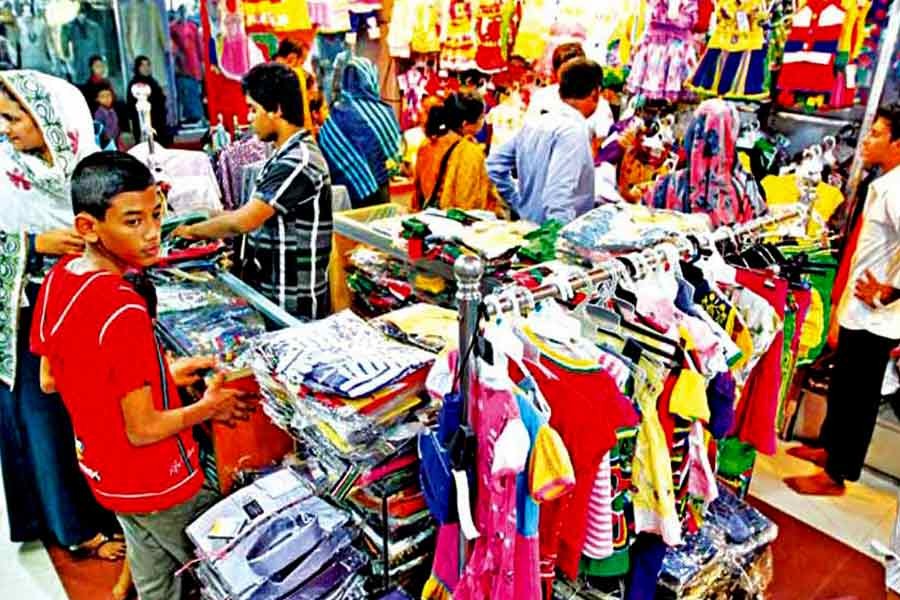Following a two-year corona-induced stalemate, leading to virtual closure of manufacture and business related to festival items, activities are fast regaining their normal pace. Sections of people are preparing to join two large festivals of the country. They are Bangla Nobo Borsho (Bangla New Year) and Eid-ul-Fitr, to be celebrated in mid-April and early May. Both the events have traditionally been witnessing people join festivities. On both the occasions, new clothes and related articles like shoes, sandals and other embellishments enjoy a dominant place. Of the two festivals, the celebration of Eid-ul-Fitr in the country is relatively older than that of Bangla New Year --- the pageant-filled observance of the latter attaining the status of a national celebration in the 1980s. The festivities of Eid-ul-Fitr mark the accomplishment of the Muslims' month-long fasting and self-abnegation. The Nobo Borsho heralds the start of a new Bangla calendar year, its celebration earlier confined mostly to villages.
Coincidentally, the two celebrations are visiting the country this year almost at the same time. Both are scheduled at a time when the nation has just started feeling relieved, with the dreaded pandemic fading out fast. In celebrating two great festivals, the nation, the manufacturing and business communities in particular, has also joined the post-pandemic jubilations. These fests also herald a time for economic rejuvenation. All this could be defined as an auspicious start for the heavily jolted national economy. In both the festivals the overall clothing and fashion trends as well as the apparels' affordability play a dominant role. The large manufacturing units with massive production capacity and both the mid-range and smaller ones have long swung into action. Currently, the phase of bringing the dresses to showrooms and displaying them is underway. The relatively smart and practical Eid and Nobo Borsho shoppers have already started visiting shopping malls and markets. Sensing the prospects for a large customer turnout, both the wholesalers and retailers are feeling happy.
As the young female and male clients with varying budgets move round the markets at Shahbagh, New Market and the upscale shopping malls to pick the suitable items ranging from special clothing, like saris and panjabis, to sandals, shoes, ornaments and trinkets, the factories remain engaged in non-stop production. The sound of operative machines after the 2-year gap rings in their ears like music. In greater Dhaka, the largest hub of small-scale dress and shoe-making factories at Keraniganj has been running for the last few decades. Wholesalers from across the country throng this festival clothing centre to take supplies of their preferred products. The centre accommodates seven thousand small garment factories. Besides, there are district-based tiny garment units making their local brands. The Eid and Nobo Borsho market is, thus, expected to circulate a huge volume of investment in the sales and purchase processes. According to a reliable source at the Keraniganj wholesale outlet this year, the order for festival dresses has more than doubled compared to that they received two years back.
Another remarkable feature has lately distinguished the Keraniganj garments centre. Thanks to dullness in the market in the last two years, many business houses had to borrow huge volumes of money to keep them afloat. Through vigorous engagement in trading in the newly rejuvenated market, they hope to start repaying their loans. The much awaited rise in their products' demand and the following sales have made the small- and medium-scale garment manufacturers look forward to better times. Along with them, the Facebook-based and online clothing entrepreneurs also bide their time for a market revival.


